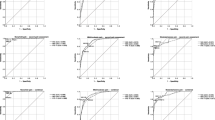Abstract
Objective: To assess whether the type of scale used (scaling effects) and the severity of outcome (outcome severity) influence patients’ numerical interpretations of verbal probability expressions.
Design: Cross-sectional survey of patients in a general medicine clinic.
Setting: A university-based Department of Veterans Affairs Medical Center.
Participants: 210 patients seen consecutively in a general medicine clinic.
Measurements and results: The patients were randomized to scale and health outcome (complications of surgery). Two scales (a long form and a short form ) were used to expressly allow patients to choose probabilities less than 1%. The long form had a lower bound of “<1 out of 1,000,000”; the short form had a lower bound of “<1 out of 1,000.” Two complications were used: “death from anesthesia” and “severe pneumonia.” In the context of being told that their surgeon believed that the chance the complication would occur was “rare,” patients were asked to give the numerical estimate of that chance. The values elicited on both scales were significantly different for the two outcomes, with the “rare” risk of death from anesthesia being characterized as less likely than the “rare” risk of severe pneumonia (F=5.24, p=0.023). Linear regression and three-factor analysis of variance showed significant differences in the probabilities elicited for scale, outcome, and age, with older patients generally responding with higher probabilities than did younger patients.
Conclusions: These findings suggest that the severity of the associated outcome and the scale used to elicit patients’ numerical estimates of verbal probability expressions influence patients’ quantitative interpretations of the verbal probability statement; and older patients respond with higher probabilities of negative outcomes than do younger patients. Future studies must continue to explore whether verbal probability expressions are adequate for communicating medical risk to patients or whether patients should be provided with numerical estimates of frequency.
Similar content being viewed by others
References
Bryant GD, Norman GR. Expressions of probability: words and numbers. N Engl J Med. 1980;302:411.
Roberts DE, Gupta G. To the editor. N Engl J Med. 1987;316:550.
Nakao MA, Axelrod S. Numbers are better than words: verbal specifications of frequency have no place in medicine. Am J Med. 1983;74:1061–5.
Robertson WO. Quantifying the meanings of words. JAMA. 1983;249:2631–2.
Mapes REA. Verbal and numerical estimates of probability in therapeutic contexts. Soc Sci Med. 1979;13A:277–82.
Kong A, Barnett GO, Mosteller F, Youtz C. How medical professionals evaluate expressions of probability. N Engl J Med. 1986;315:740–4.
Merz JF, Druzdzel MJ, Mazur DJ. Verbal expressions of probability in informed consent litigation. Med Decis Making. 1991;11:273–81.
Sudman S, Bradburn NM. Response Effects in Surveys: A Review and Synthesis. Chicago: Aldine, 1974.
Hamm RM. Selection of verbal probabilities: a solution for some problems of verbal probability expression. Org Behav Hum Decis Process. 1991;48:193–223.
Wallsten TS, Fillenbaum S, Cox JA. Base rate effects on the interpretations of probability and frequency expressions. J Memory Language. 1986;25:571–87.
Weber EU, Hilton DJ. Contextual effects in the interpretations of probability words: perceived base rate and severity of events. J Exp Psychol [Hum Percept]. 1990;16:781–9.
Viscusi WK. Smoking: Making the Risky Decision. New York: Oxford University Press, 1992;65–70, 155.
Sutherland HJ, Lockwood GA, Tritchler DL, Sem F, Brooks L, Till JE. Communicating probabilistic information to cancer patients: is there ‘noise’ on the line? Soc Sci Med. 1991;32:725–31.
Author information
Authors and Affiliations
Additional information
Supported in part by the National Science Foundation under contract SES-9020984 with Carnegie Mellon University.
Rights and permissions
About this article
Cite this article
Mazur, D.J., Merz, J.F. How age, outcome severity, and scale influence general medicine clinic patients’ interpretations of verbal probability terms. J Gen Intern Med 9, 268–271 (1994). https://doi.org/10.1007/BF02599654
Issue Date:
DOI: https://doi.org/10.1007/BF02599654




